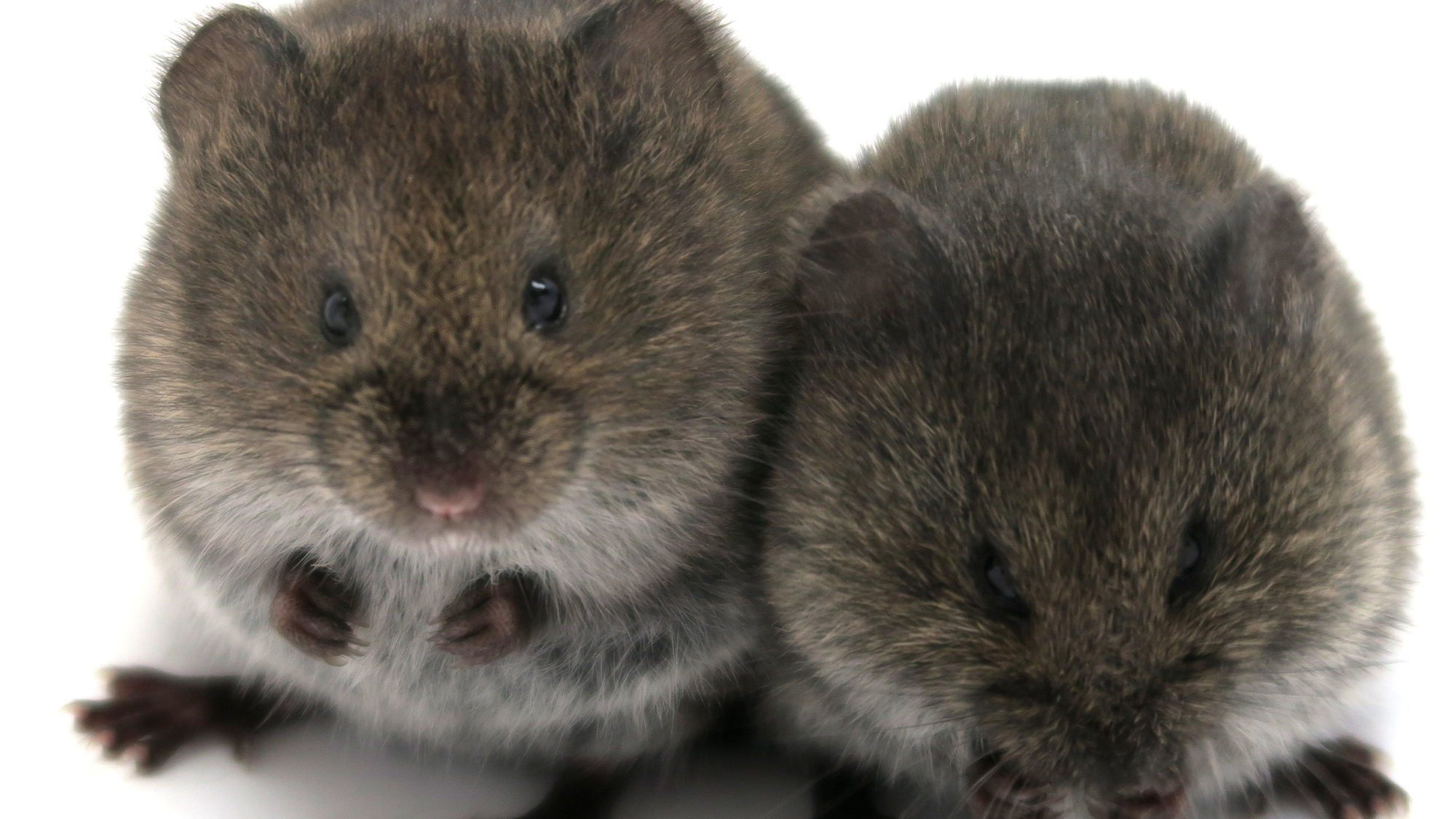

Serotonin and dopamine are often called the “feel good” or “happy” hormones for their role in boosting moods. There is even a “love hormone”produced in the hypothalamus called oxytocin. For decades, research has pointed to oxytocin receptors as a pathway essential to developing social behaviors like romantic relationships and attachments in mammals like humans and prairie voles.
However, a study published January 27 in the journal Neuron isn’t so sure that oxytocin is absolutely essential. It finds that voles can actually form enduring attachments with mates and even parent their young without oxytocin receptor signaling.
[Related: Prairie Voles Show Empathy Just Like Humans.]
Prairie voles are small rodents found in the Midwest and also are one of only a few monogamous mammal species. They show empathy and form lifelong partnerships called “pair-bonds” after mating. The bonded voles share parenting duties, show signs of preferring their partner over strangers of the opposite sex, and actively reject new partners. In previous studies, drugs used to block oxytocin from binding to its receptors caused voles to be unable to pair-bond.

Neuroscientists Devanand Manoli from University of California, San Francisco and Nirao Shah from Stanford University and their team used the gene editing technique Clustered Regularly Interspaced Short Palindromic Repeats (CRISPR) to generate prairie voles that don’t have functioning oxytocin receptors to test if pair-bonding was really controlled by signaling oxytocin receptors. They then tested the mutant voles to see if they had the ability to form enduring partnerships with other voles.
The answer? Yes, these voles formed loving pair-bonds just as readily as normal voles.
“We were all shocked that no matter how many different ways we tried to test this, the voles demonstrated a very robust social attachment with their sexual partner, as strong as their normal counterparts,” said Manoli, in a statement.
The team then wondered if oxytocin receptor signaling is also as critical for functions like co-parenting, parturition (or childbirth), and milk release during lactation. The mutant voles, however, could give birth and even nurse. The male and female mutant voles were also both engaged in their usual parental behaviors of huddling, licking, and grooming. Mutant pairs could even rear their pups to weaning age.
The mutant voles did, however, have some difficulties. They had limited milk release compared to normal voles, and fewer of their pups survived to weaning age. Those that did make it to weaning age were smaller compared to the pups of normal prairie voles.
[Related: ‘Love Hormone’ Also Boosts Feelings Of Spiritual Enlightenment.]
According to the team, this study is different from ones that have used drugs to block oxytocin receptor signaling because genetics studies like this one can be more precise. “Drugs can be dirty,” said Manoli, “in the sense that they can bind to multiple receptors, and you don’t know which binding action is causing the effect. From a genetics perspective, we now know that the precision of deleting this one receptor, and subsequently eliminating its signaling pathways, does not interfere with these behaviors.”
Another key difference is that pharmacological studies suppress oxytocin receptor signaling in adult animals, but this study was able to switch it off when the voles were embryos.
“We’ve made a mutation that starts from before birth,” said Shah. “It could be that there are compensatory or redundant pathways that kick-in in these mutant animals and mask the deficits in attachment, parental behaviors, and milk let-down.”
According to the team, this study shows that there likely isn’t a single treatment or silver bullet for something as complex and nuanced as social behavior. Their vole-specific molecular tools and protocols, however, can help open doors to other research in genetics and biology.
“We’re very happy to be part of a community and to have this technology that we can share,” said Manoli. “Now we have this trove that we can start to mine. There are so many other questions that prairie voles could be interesting and useful for answering, both in terms of potential clinical implications for models of anxiety or attachment and also for basic comparative biology.”
